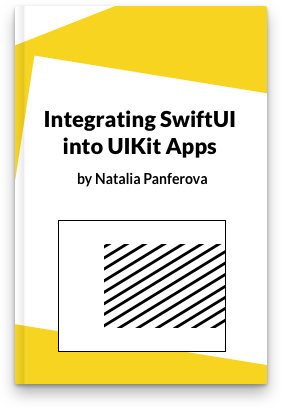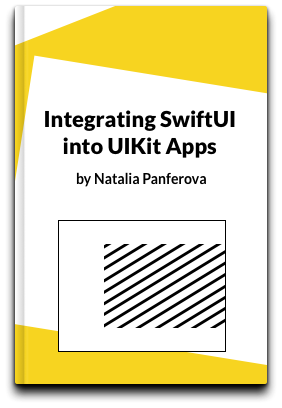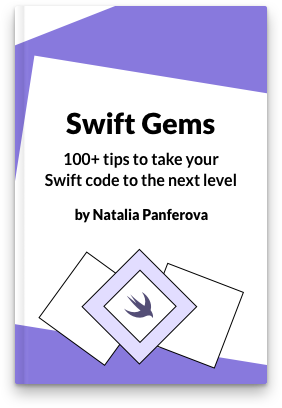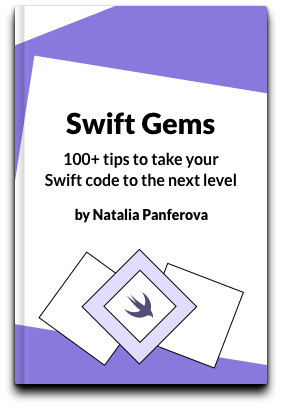Starting and growing your own technical blog
Starting and growing your own technical blog can be a transformative experience for both personal and professional development. In my recent talk at the Code Camp Wellington conference, I discussed how launching a technical blog can help you expand your expertise, contribute to the tech community, and create new career opportunities. Since my talk wasn't recorded, I wanted to share my insights here to inspire more people to start sharing their technical knowledge online.
My blog on nilcoalescing.com began four years ago and has grown into a popular platform where I share my expertise in iOS development and other tech topics. With over 100 posts and an average of 3,000 daily readers, it's become a significant part of my career.
Starting my blog in early 2020 opened many doors, from podcast invitations to workshops and even a job at Apple on the SwiftUI team. Although I paused blogging during my time at Apple, I resumed in 2022 and continued to grow my audience. The positive feedback from the community motivated me to publish my books, Swift Gems and Integrating SwiftUI into UIKit Apps, aimed at helping developers enhance their Swift skills and smoothly integrate SwiftUI into existing UIKit projects.
Blogging has brought me numerous opportunities and personal growth. I hope to encourage you to start or enhance your own technical blog with the insights and tips I'll share.
# Benefits of sharing knowledge online
One of the most significant benefits of maintaining a technical blog is the improvement of your writing and communication skills. As software developers, we often communicate through written mediums such as Slack messages, emails, code comments, and documentation. By writing blog posts, you learn to convey complex ideas clearly and concisely, which is a valuable skill in any professional setting. This practice can help you become more effective in your daily work, making your communication with colleagues and stakeholders more precise and understandable.
Additionally, blogging forces you to deepen your understanding of the topics you write about. The research and experimentation required to produce high-quality content solidify your knowledge and make you more proficient in your field.
Blogging offers more than just personal gains, it allows you to contribute to the broader tech community. By sharing your insights and solutions, you enrich the wealth of free resources available to other developers. We are fortunate to have many excellent free resources in the iOS space, and I am proud to contribute to this collective knowledge.
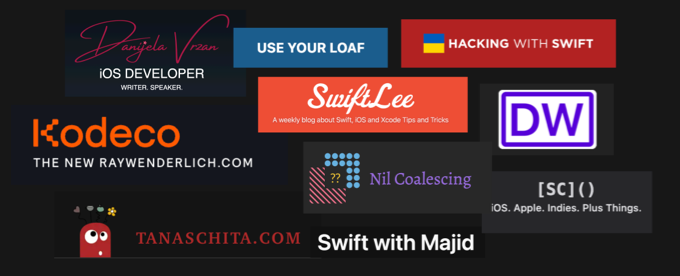
The sense of giving back is incredibly rewarding. I often receive messages from readers thanking me for my posts and sharing how my content has helped them solve problems or learn something new. These interactions make me feel connected to a global community of developers. Knowing that my work has a positive impact keeps me motivated to continue blogging.
Writing a blog also opens up career opportunities that you might not have anticipated. When you make your work visible online, you attract attention from potential employers and collaborators. For example, my blog led to invitations to speak at conferences, lead workshops, and even join the SwiftUI team at Apple. These opportunities might not have come my way if I hadn't shared my knowledge through my blog.
# Choosing the right blogging platform
To get started with your own blog, the first step is to choose a blogging platform that suits your needs and preferences. Platforms like Medium offer a straightforward setup with a built-in audience but limited customization options. Content management systems like WordPress or Squarespace provide more customization but may involve additional costs. For those comfortable with coding, static site generators like Publish, which I use for my blog, offer high performance and flexibility.
When choosing a platform, consider its accessibility support. Ensure that your content is accessible to as many people as possible by adding image descriptions, enabling keyboard navigation, and testing the contrast and readability of your text. Additionally, make sure your website adapts to different screen sizes, particularly for mobile devices, and supports both dark and light modes.
For a technical blog, displaying code snippets with proper syntax highlighting is crucial. Check if the platform supports your preferred programming languages or allows you to integrate additional libraries for syntax highlighting.
Also, consider how your target audience will find your blog and whether the platform provides tools for analytics to monitor your blog’s performance.
# Generating content ideas
Once you are ready to start writing, you may find it difficult to come up with ideas, at least initially. One effective strategy is to write about something you’ve recently learned. This could be a specific topic like “Exporting and importing localizations in a SwiftUI app” or a more general one like “Lessons from my first year in cybersecurity.” Documenting recent projects, the challenges you faced, and how you overcame them can also provide valuable content. For example, you might write about “How to build a chat app with WebSocket.”
Staying up-to-date with recent developments in your field and covering new technologies and APIs as they are released can attract a lot of readers. My blog posts about new Apple APIs during the WWDC season always bring a lot of traffic to my blog. People are eager to see new features in action, even if they can’t immediately use them.
Another way to generate content ideas is to address common problems faced by others. When I was starting my blog, I would browse Stack Overflow for highly upvoted questions without detailed answers and then write blog posts providing solutions. I would then share a description and a link to my post in the Stack Overflow replies. This strategy was highly effective in attracting readers.
You can also write reviews and comparisons of tools and technologies you use, such as comparing AWS Lambda and Microsoft Azure Functions. Don’t feel pressured to always write long articles; sometimes, short tips with code snippets can be just as valuable.
# Structuring your blog posts
From my personal experience, there are three types of content that work great for a technical blog: short tips, regular articles, and series of articles. Each of these types can be effective depending on the topic you are trying to cover and the level of detail your audience expects. Having all of these types represented on your blog can attract readers with different preferences.
Short tips are a great way to get started and are usually very popular. When I write a short tip, I typically provide a few sentences describing the problem and a solution in the form of a code snippet that others can easily copy and integrate. It can be helpful to also provide a link to documentation or another post covering the subject in more detail for those who are interested. This type of content is popular among developers because we often want a quick solution to a problem we are having at work and don’t always have lots of time to read long explanations. You can see some examples of short tips under the tips section of my blog.
If you have an idea and the time to explore it in detail, then writing a traditional article could be a good choice. There is a specific structure that works well for articles, such as an introduction, subsections, and a summary. It’s important that the introduction describes the purpose of the article well so that readers can understand immediately if the article is going to be useful for them. Subsections with headers make it easier to quickly scan the page and jump to the right part of the blog post if needed. The summary can include the key points covered in the post and maybe a link to a sample project that readers can download and run if applicable. I recommend putting as many code samples and screenshots throughout your blog post as possible to make it easier for people to understand what you are explaining.
If you would like to cover a complex topic with a detailed explanation, then you might consider writing a series of articles. Breaking the topic down into digestible pieces of information can be more effective than writing a single, extra-long blog post. When writing a series of posts, I recommend structuring them in a similar way and providing links to all the posts in the series in one place. Having internal links in your blog can also be good for search engine optimization.
# Promoting your content
After publishing your posts, promoting them effectively is crucial for attracting readers. Social media can be a powerful tool for this. Set up your profile with a picture and a brief description of what you do, making you appear more approachable and engaging to potential readers. Although it can be intimidating to put yourself out there, the positive feedback you receive can boost your confidence. I started sharing my posts anonymously but eventually switched to using my real name after receiving encouraging feedback. You can check out my X (Twitter), Mastodon and LinkedIn profiles to see how I share my new blog posts.
Posting on multiple platforms like X, Mastodon, and LinkedIn can help you reach a diverse audience. Sharing your articles in relevant LinkedIn groups can also increase visibility. The timing of your posts can impact engagement, so experiment with different times to see what works best for your audience.
Ensure that your social media posts display correctly by using appropriate meta tags for social media banners. Visual elements like code samples or screenshots can make your posts more attractive. Using relevant hashtags can also help your posts get discovered by a broader audience. Engaging with comments and answering questions can provide valuable feedback and foster a sense of community around your blog. While it's important to interact with your readers, try to maintain a sustainable level of engagement to avoid burnout. Focus on meaningful interactions and prioritize comments that add value to the discussion or require clarification, ensuring you stay motivated and connected without feeling overwhelmed.
Another effective strategy is to get your content included in technical newsletters. Subscribe to as many newsletters in your field as possible to understand what kind of content is typically included. Reach out to newsletter authors and share a link to your blog and RSS feed. Some newsletters accept submissions through GitHub, so look for open-source newsletters where you can submit your links.
After publishing your posts and promoting them, consider using tools like Google Analytics to monitor their performance. Analyzing page views, and traffic sources can help you tailor your content to better meet your readers’ needs and interests.
# Exploring monetization strategies
As your blog grows in popularity, you can start thinking about monetization strategies. One straightforward way to earn some income is by asking your readers for donations. Setting up a sponsorship page on GitHub and including a link to it in your articles can generate some contributions. For instance, I have a sponsorship page and at the end of each post on my blog I mention, “If you like our blog, please consider supporting us on GitHub.” While this approach doesn't bring in a significant amount of money, it does result in some contributions and even a few monthly subscribers, which motivates me to keep publishing articles.
Promoting your own products, such as books or apps, within your articles can be highly effective. Including banners or links to your products can drive sales, especially when your articles attract significant traffic. You can also advertise freelance or consulting services you offer, turning your blog into a platform for showcasing your expertise.
Another viable option is offering sponsorship slots on your website. You can charge a flat rate to promote relevant products or services to your audience. This method works well if your blog has a dedicated readership and can attract companies looking to reach your specific audience. By carefully selecting sponsors that align with your content, you can maintain the trust of your readers while generating income.
As your blog continues to grow, these monetization strategies can help you turn your passion for writing into a sustainable source of income, allowing you to invest more time and resources into creating valuable content for your readers.
# Recap and final thoughts
Having your own technical blog can bring great personal benefits. Sharing your knowledge online can help you improve your writing skills, force you to understand the topics you write about on a deeper level, and serve as a repository of knowledge you can refer to in the future.
Blogging can also benefit the technical community by increasing the number of freely available resources and providing unique perspectives that can help others learn. It can help you foster connections within the industry and stay in touch with developers worldwide.
Making your work visible can attract exciting career opportunities and get you headhunted for roles you might not have considered.
To get started, choose a blogging platform you’re comfortable with that provides a good user experience for your target audience.
Share your content in various formats, including short tips, traditional articles, and series of posts. Promote your content on social media and reach out to newsletter authors to increase visibility. When you’re ready, explore monetization strategies to turn your blog into a potential source of side income.
I hope my story and insights inspire you to start or enhance your own technical blog and share your knowledge with the world.


